SPOTLIGHT OP-ED
Six ways clinics can help turn the tide on TB infection
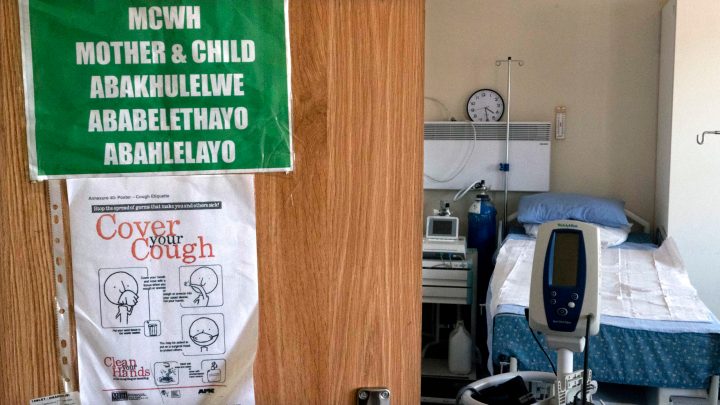
The tide can be turned on the TB infection rate if clinics follow a checklist of good practice, making them safer for patients and staff. However, most clinics are failing to implement enough of these measures, putting people at risk of getting TB while waiting at the clinic, argue representatives from the community clinic monitoring group Ritshidze.
Six simple interventions are at the heart of how clinics can be part of turning the tide on TB infection — a disease that still kills close to 60,000 people a year in South Africa, according to the World Health Organization (WHO).
By following a checklist of good practice, clinics can help curb the spread of TB infection and build awareness and education, in the process becoming enabling environments that ensure effective and sustainable TB programmes can be implemented and that patients are supported to complete their full course of treatment.
The six measures are:
- Ensuring enough room and space for patients to wait without overcrowding;
- Keeping windows open;
- Ensuring there are TB information posters prominently displayed;
- Reducing clinic waiting times to less than an average of an hour and 15 minutes;
- Screening all arriving patients for TB symptoms;
- Separating patients who are coughing on arrival at the clinic.
Previously, there was a seventh item on the checklist. It was for people who are coughing to be given a mask to wear on arrival. However, since the onset of Covid-19, everyone has to, by law, wear a mask in a public place such as a clinic.
With the checklist in mind, we at community clinic monitoring group Ritshidze have developed a scorecard and a traffic light system to rate clinics on how good their TB infection control is. Clinics that adhere to all the measures are given a green light, those that are on the right track but still off target get a yellow light, and a red light is given to those that are way off the mark.
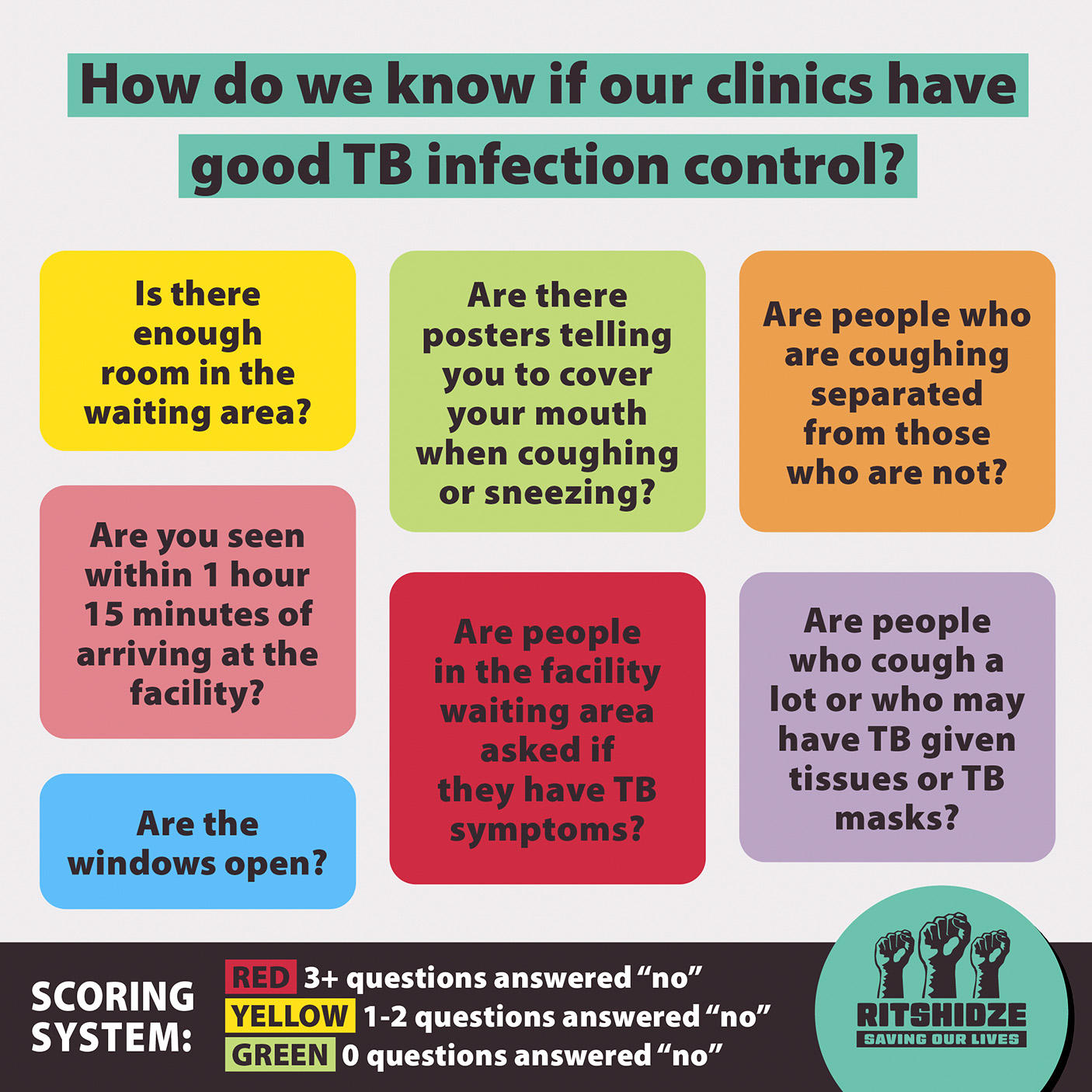
(Graphic: Ritshidze / Spotlight)
A scorecard that is easily understood with a traffic light system can help clinics track their adherence to the recommendations, and it also allows patients to monitor how their own clinic is matching up. A visible scorecard also gives patients the back-up to speak out for their rights to be better protected from the risk of TB infection when they arrive at a clinic.
For the period October to December 2020, only two clinics were awarded green status for checking all six measures on the scorecard. These were Eshowe Gateway Clinic and King Dinuzulu Clinic, both in King Cetshwayo District in KwaZulu-Natal. They make up just 0.5% of the clinics Ritshidze monitored.
Ritshidze scored 159 clinics with yellow status. This translates to about 40% of the clinics being monitored following about half of the best practice measures for infection control. It leaves 234 clinics — or just under 60% of clinics surveyed — failing altogether at meeting these six basic best practices to stop the spread of TB. You can view the full TB infection control survey here.
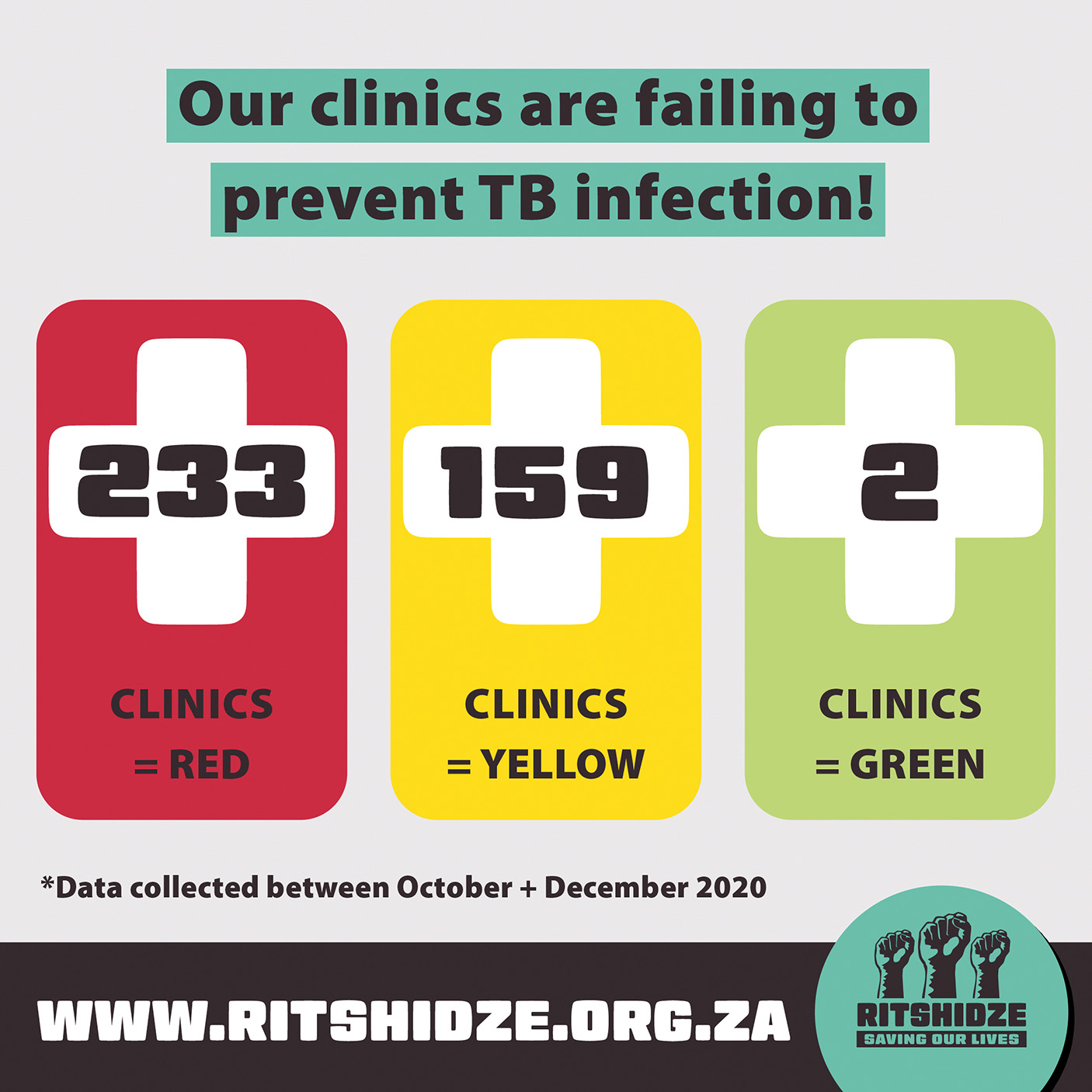
(Graphic: Ritshidze / Spotlight)
By indicator, our data shows that the majority of patients still report that facilities are not taking the appropriate measures to minimise the risk of TB spread.
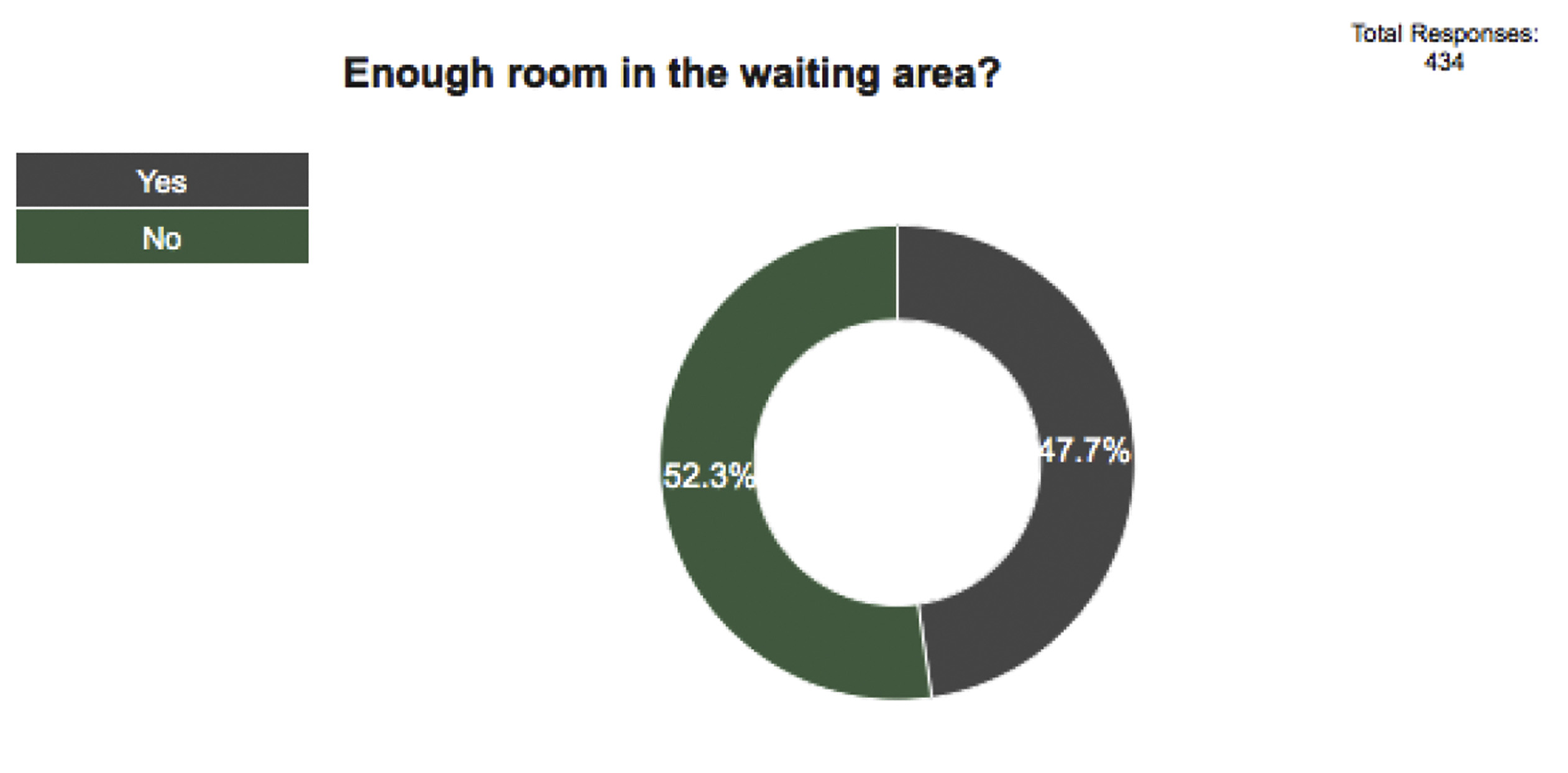
Of 434 observations, only 47.7% of community monitors reported enough room in the waiting area. (Graphic: Ritshidze / Spotlight)
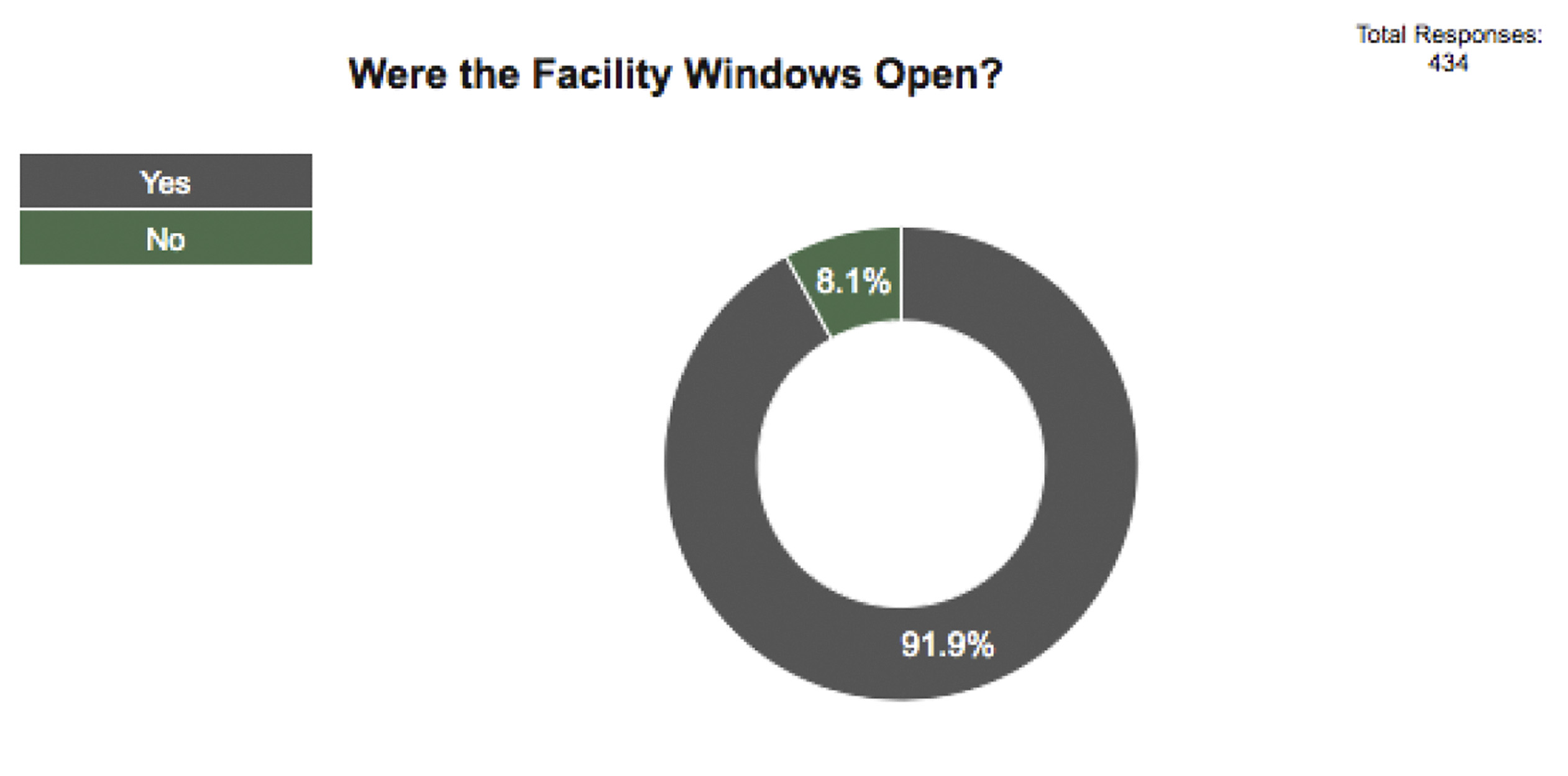
From 434 observations, 91.9% of clinics had their windows open. (Graphic: Ritshidze / Spotlight)
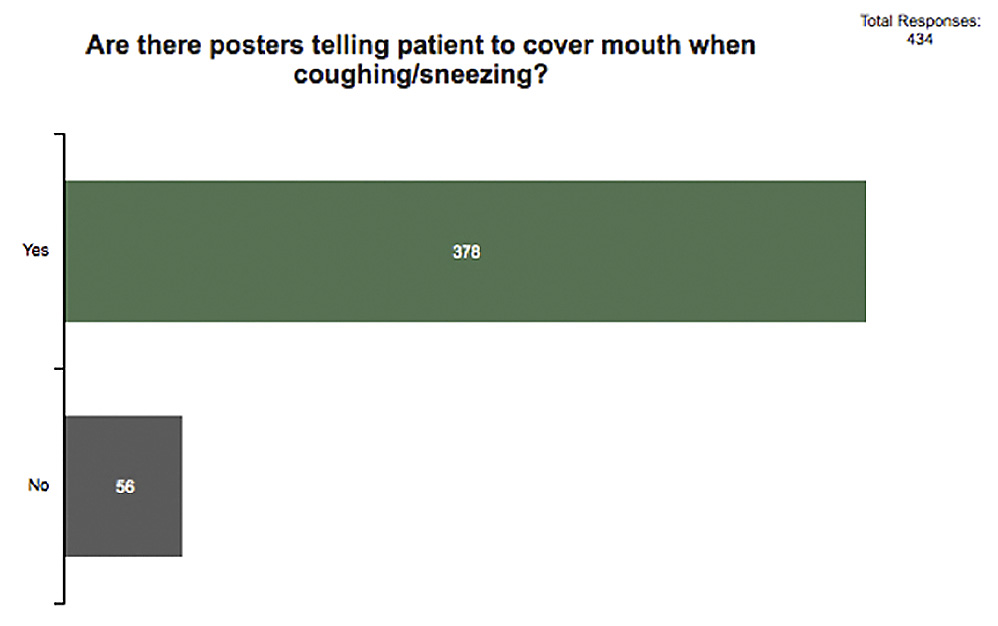
There were 378 observations of posters telling you to cover your mouth when coughing or sneezing. (Graphic: Ritshidze / Spotlight)

Of 7156 responses, only 49.7% of patients report that staff always ask people in the waiting areas if they have TB symptoms (coughing, fever, recent weight loss). (Graphic: Ritshidze / Spotlight)

Of 7128 responses, only 33.6% of patients report that people coughing in waiting areas are always separated from other people. (Graphic: Ritshidze / Spotlight)
Ritshidze gathers the information on a quarterly basis through our wide network of community monitors and existing branches of PLHIV-led organisations.
Currently, there are 400 clinics across eight provinces (excluding Northern Cape) that are part of the monitoring initiative. The data is collected from PLHIV, and healthcare users are drawn from communities and provide an important snapshot of the health and state of South Africa’s clinics.
The TB infection control scorecard — among other data collected and analysed in Ritshidze — is meant to be a motivating tracking tool that can get more people sensitised to the need to arrest the spread of a disease that still makes around 360,000 people sick each year, according to WHO data for South Africa for 2019.
This is a rate of 615 people per 100,000. Alarmingly, it is also 20% higher than the number of infected people recorded in 2018. South Africa’s TB Prevalence Survey paints a worse picture, estimating that 390,000 people get sick a year. The WHO also estimated that 14,000 people contracted multidrug-resistant TB in 2019.
The good news is that in that reporting period the number of deaths to TB was down year on year with an estimated number of deaths down from 63,000 in 2018 to around 58,000 in 2019.
By province, according to 2015 data, Gauteng remains the hardest hit, followed by KwaZulu-Natal and Mpumalanga.
Overall, much more needs to be done to ensure that all clinics are at the required level for TB infection control. For years we have been calling unsuccessfully for certain measures to be adopted, only to see key measures made quickly possible during the Covid-19 pandemic.
If we are able to educate people about Covid-19 infection control to ensure the use of masks in clinics, to screen people for Covid-19 symptoms on arrival, to ensure the provision of Covid-19 posters in all South African languages, then these things must be possible for TB as well. The only thing lacking is political will. South Africa faces a choice. We can continue to let people die of preventable TB or we can act with urgency and determination to defeat it.
Some specific recommendations:
- All patients should be screened for TB symptoms upon arrival at the facility (this can be integrated with Covid-19 screening).
- All windows should be kept open for ventilation.
- Large TB infection control posters in various South African languages should be displayed in visible places in the waiting area.
- People coughing or with TB symptoms should be seen first to reduce the risk of TB transmission while waiting.
- While waiting, people who are coughing should be separated from those who are not. DM
Rambau is a Ritshidze Project Officer and Tshabalala is the chairperson of the Treatment Action Campaign.
*This article was first published here.
For more updates from Ritshidze, follow them on Twitter, Facebook and Instagram or go to their website at www.ritshidze.org.za
Note: The Treatment Action campaign participates in the Ritshidze project. Spotlight is published by SECTION27 and the Treatment Action Campaign but is editorially independent, independence that the editors guard jealously. The views expressed in this article are not the views of Spotlight.
"Information pertaining to Covid-19, vaccines, how to control the spread of the virus and potential treatments is ever-changing. Under the South African Disaster Management Act Regulation 11(5)(c) it is prohibited to publish information through any medium with the intention to deceive people on government measures to address COVID-19. We are therefore disabling the comment section on this article in order to protect both the commenting member and ourselves from potential liability. Should you have additional information that you think we should know, please email [email protected]"





 Become an Insider
Become an Insider